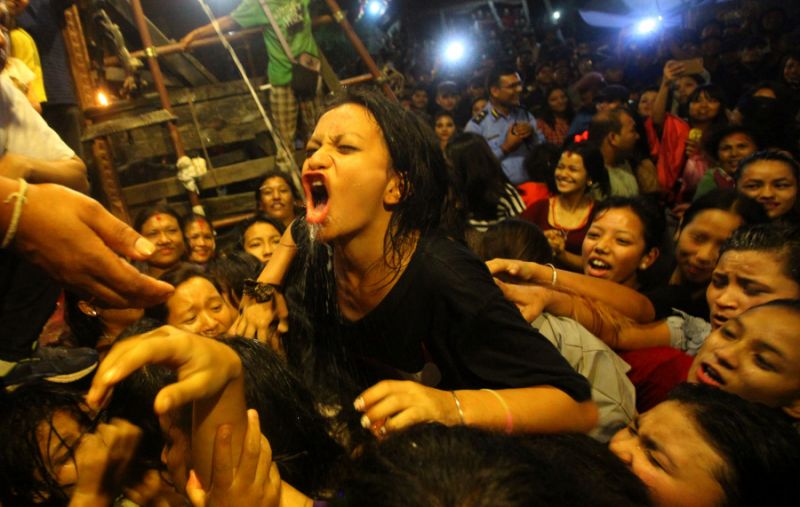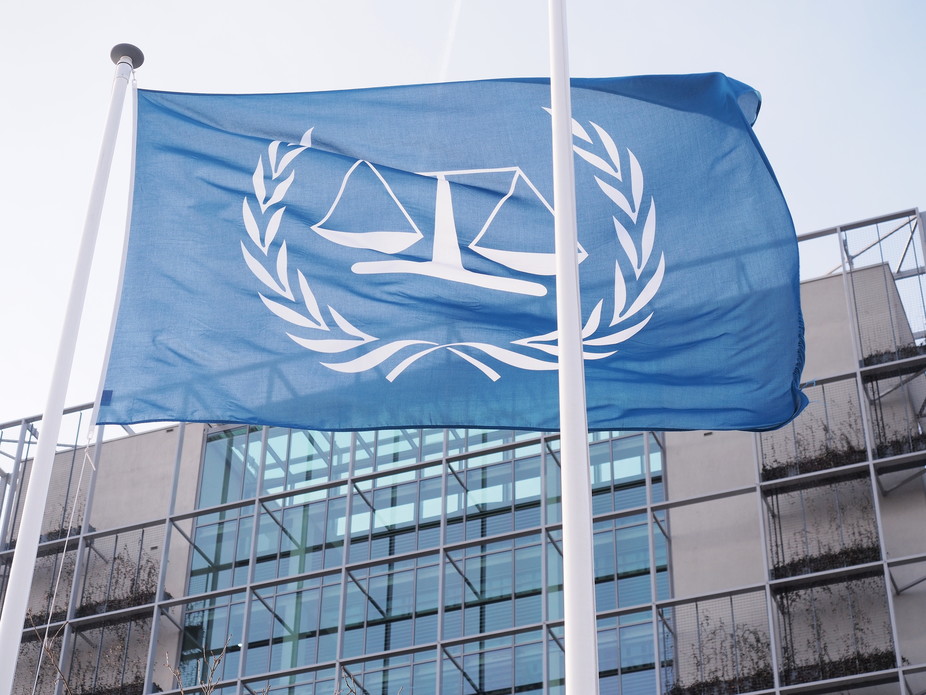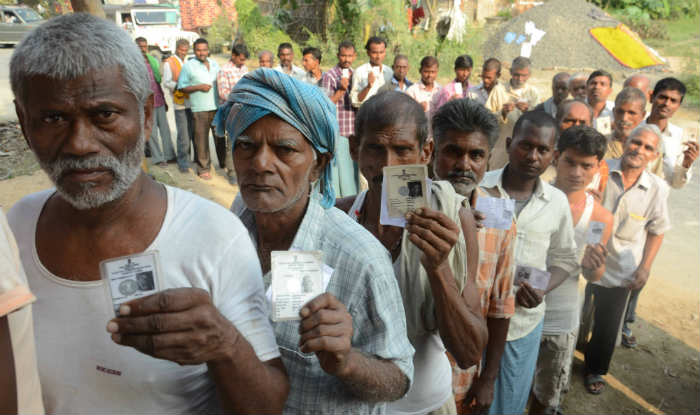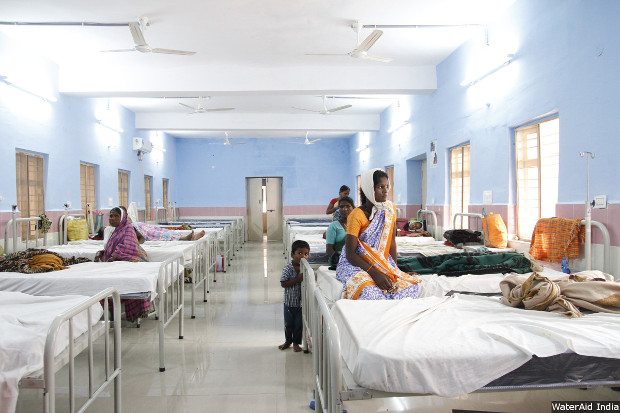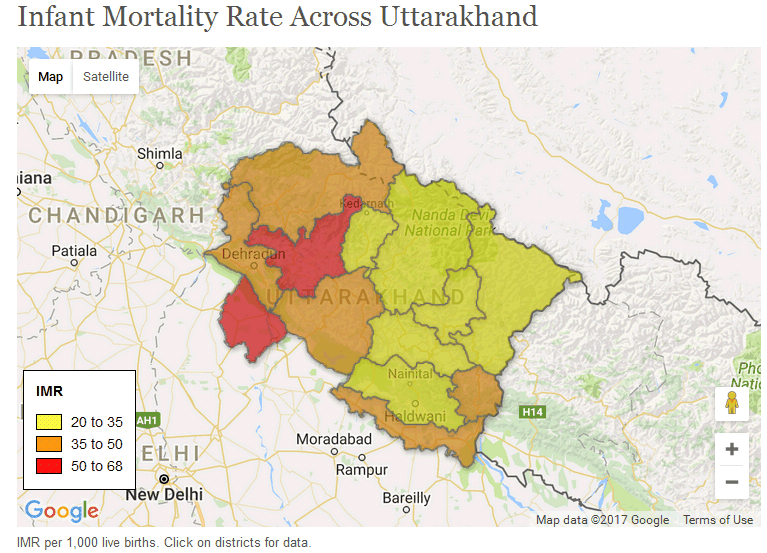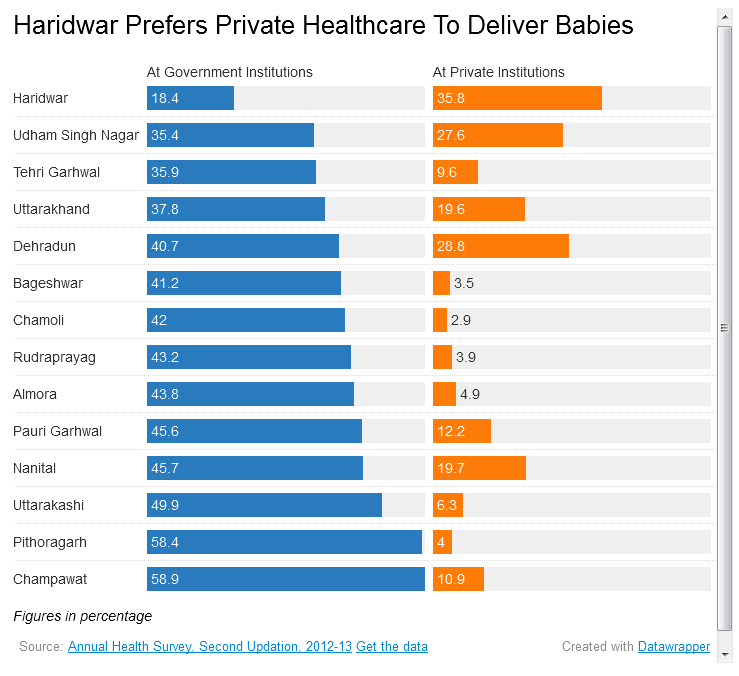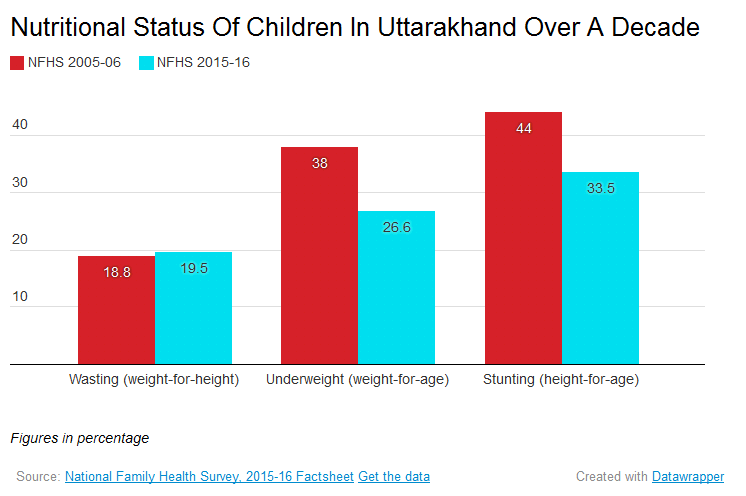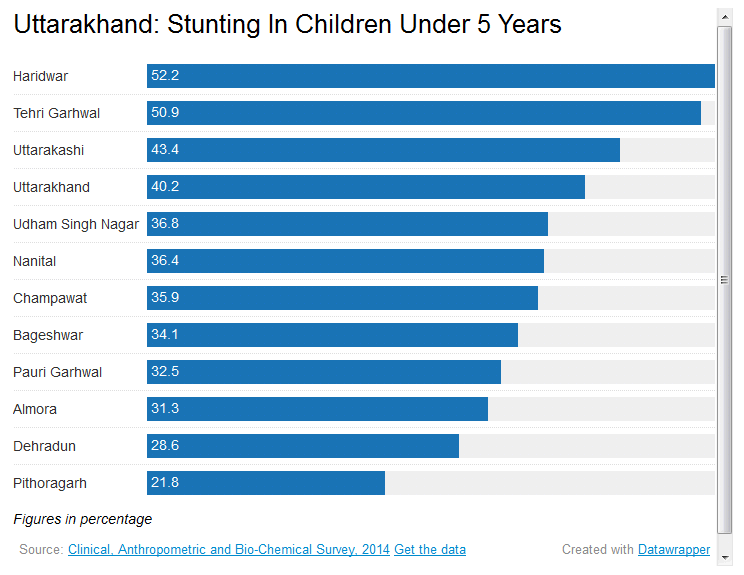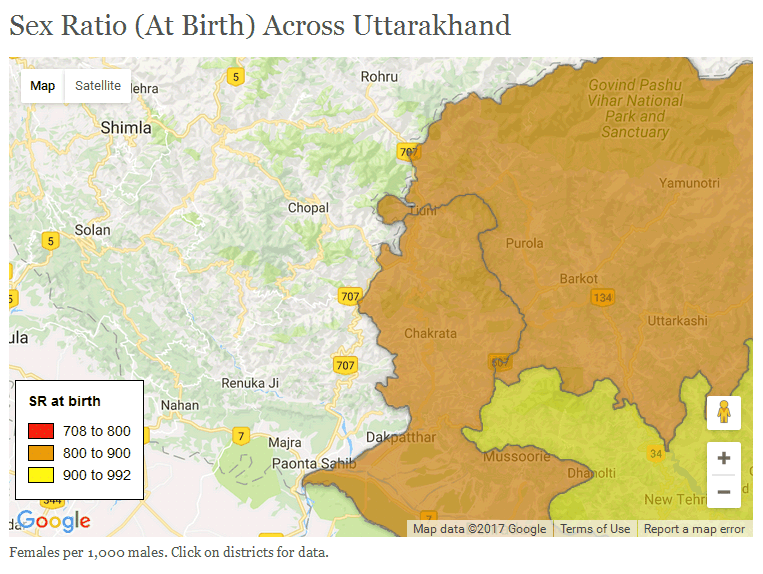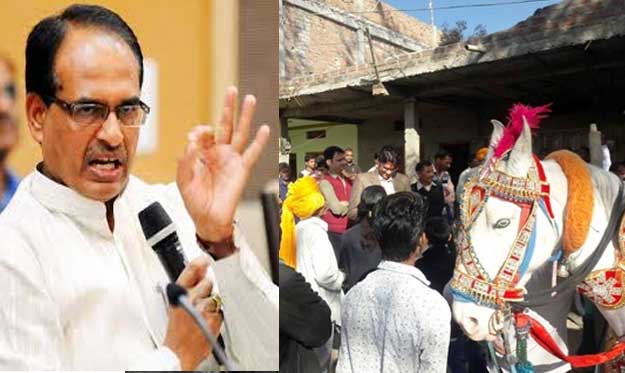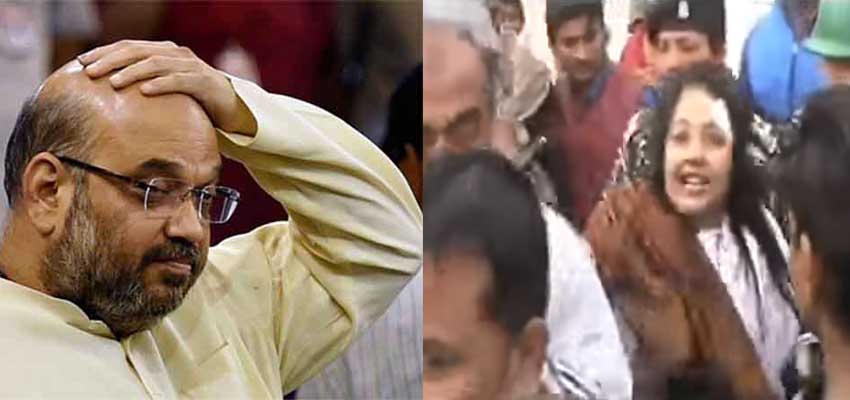Meerut: All assembly constituencies of Meerut district are witnessing a tough political battle, with nopolitical party appears to be in the position of claiming victory. While Dalit voters, who are an important constituent of the caste calculus here, are rallying behind the Bahujan Samaj Party (BSP), Muslims are indicating that they will vote for the candidate who can defeat the Bharatiya JanataParty (BJP).

Here, we will try to make sense of the caste arithmetic of the western Uttar Pradesh district. The district, which is a business hub because of the flourishing ornaments, sports and musical instruments industries, has seven assembly segments – Meerut city, Siwal Khas, Kithore, Meerut Cantt., Hastinapur, Meerut South and Sardhana.
Meerut (city) Assembly Constituency
The seat, which used to be considered a safe seat for the BJP because of a large concentration of the trading community, is witnessing a tough fight between Laxmikant Vajpayee, three-time MLA of the constituency and former chief of the saffron party’s UP unit, and Samajwadi Party’s Rafiq Ansari.
Muslims, who constitute around 1.25 lakh of the total voters (around 3.5 lakh), appear to be decisively voting in favour of the SP to keep the BJP at bay. This was evident from their high participation in the joint public address by Chief Minister Akhilesh Yadav and Congress Vice President Rahul Gandhi on Tuesday.
The constituency has around 40,000 Baniya (a trading community), 30,000 Sikh (Punjabi-Khatri), 30,000 Brahmin and 35,000 Dalit votes. Local voters say that following demonetisation, the traders’ community – which traditionally used to votefor the BJP – has now decided to change their preferences. The Sikh community has an alternative in Punkaj Jolly, a Sikh businessman who has been fielded by the BSP.
Additionally, the city seat has small population of Valmiki voters – who are considered to be a “votebank of the BJP”. The community too have “decided to teach the BJP a lesson this election because of ignoring their concerns”.
“A meeting of our community was held recently at Ronakpura – a Valmiki settlement in Meerut –where we anonymously decided to vote for the BSP and create a history,” said Prem Nath Dhingra, a Valmiki leader.
But why? “Are you feeling comfortable here?” he asked standing near an open sewage drain which was emanating all-pervasive stench.
“The entire area where we live has overflowing garbage dump. Weare living in a hell despite supporting a party which has been ruling the Meerut civic body for the past 15 years,” he added.
Not only is the Valmiki community miffed with the BJP, the small and medium traders are also apparently unhappy with the saffron party because the demonetisation has “brought down their business by almost fifty percent”.
“The traders’ community has now decided to shift their loyalty. We have an option (indicating thecandidature of BSP’s Pankaj Jolly) this election,” said a book shop owner in Subhash Bazaar refusing tobe named.
Though he agrees that it is not that the entire business community, who will go against the BJP, but confidently claims that the party has lost support of a major portion of the community. He said the majority of the Punjabi community’s votes will go in favour of Jolly.
If this happens and votes of the Baniya community also get divided, it is certainly not a good news for the BJP.
On the other hand, the SP candidate Ansari clearly enjoys the support of Muslims. He is likely to get support of a chunk of the Brahmin community because of the alliance with Congress. Therefore, he is apparently giving a tough fight to Vajpayee. Interestingly, experts also do not rule out the winning probability of the BSP candidate if he successfully fetches the Punjabi votes.
“The BSP already enjoys Dalit (35,000 votes) support. If it gets success in attracting Punjabi and Muslims votes, then the victory party is certain,” said Dr Satish Prakash, political analyst and associate professor at Lucknow College.
Sawalkhas Assembly Constituency
It is a Jat dominated seat with around 60,000 votes of community. The number of Muslim votes in this constituency stands at around 1.25 lakh. The SP has fielded Ghulam Mohammad, who is a sitting MLA here, the BSP has given ticket to Nadeem Chauhan, the BJP and the RLD have chosen Jats as its candidates.
Though the SP’s candidate is strong here but he carries anti-incumbency. If the Muslim votes get divided between the SP and the RLD, then locals are of the view that that the RLD candidate will win. Asked what about the BJP candidate, who is also a Jat, they said that “Jats are extremely unhappy with the BJP because of the reservation issue and demonetisation which has affected their farming. We are not voting for the Congress and the SP either. Our support is first for the RLD and if not the RLD, then for the BSP”.
Kithore Assembly Constituency
The seat has major share of votes of two communities – Gujjars (60,000) and Dalits (60,000). The SP has fielded Shahid Manzoor, who is a cabinet minister in the state, the BJP has given ticket to Satvir Tyagi , the BSP has tried luck with Gajraj Singh Nagar (a Gujjar) and the RLD has pitted Matloob Gaur.
Locals say that Matloob is a strong leader and giving a tough fight to his rivals. But despite the fact that he is socially well accepted, his contest is with a former minister who has his own support base.
“If theRLD candidate (Matloob) cuts into the Muslim votes, then his prospect is strong. Otherwise, the BSP will win the seat,” they added.
Meerut Cantt. Assembly Constituency
Dalits have highest number of voters (70,000) here, Baniyas constitute around 60,000 of the total votes, the number of Jat votes stand at 30,000 and Muslims 15,000. Valmikis too have around 20,000 votes.The BJP has fielded Satya Prakash (three-times MLA from here), Congress Ramesh Dhingra (a Punjabi), BSP Satendra Solanki (a Jat) and RLD Sanjeev Dhama (a Jat).
It means, two Jats are in the fray. There is a triangular fight on this seat between the BJP, Congress and the BSP. Strong anti-incumbency was quite visible for BJP’s Agarwal. In addition, the BJP workers and leaders themselves were opposing his candidature. Dhingra is giving a tough fight to others because he is getting support of Punjabis (his own community) and Muslims (because of the alliance).
He is a popular leader in the constituency. He had secured 30,000 votes when he fought the last assembly elections on Congress ticket and lost to BJP’s Agarwal with a thin margin. But if you look at the trend of previous elections in the state, it suggests that the triangular fight always benefits the BSP.
Hastinapur Assembly Constituency
It is a reserved seat for SCs. BSP’s Yogesh Verma, BJP’s Dinesh Khattik, SP’s Prabhu Dayal (who is the sitting MLA and belongs to the Valmiki community) and RLD’s Usha Rani are challenging each other. The constituency has around 60,000 Gujjar, 25,000 Jat, 65,000 SC, 5,000 Valmiki, 20,000 Baniya, 40,000 Punjabi and 15,000 Bengali (migrated Hindu Bangladeshis) votes.
BSP’s Yogesh Verma appears to be strong here because most of the Muslims this reporter spoke to favoured his candidature. In the last assembly elections, he had independently fought and secured 42,000 votes and lost by only 2,000 votes.
Meerut South Assembly Constituency
The seat has around 75,000 Dalits votes, 1.25 lakh Muslim votes, 25,000 Gujjar votes 25,000 Baniya votes, 20,000 Jat votes and around 15,000 Brahmin votes.
The BSP appears to be strong here as its candidate Yaqoob Qureshi is a strong and popular leader among Dalit and Muslim communities. He shot to limelight after he had announced a prize money of Rs 51 crore to those who beheaded the Danish cartoonist who had stirred controversy after creating a caricature of Prophet Mohammad. He is a former minister too.
There is a direct fight between the BJP and BSP on this seat.
Sardhana Assembly Constituency
BJP’s Sangeet Som is a star candidate here. He emerged as Hindu Hirdaya Samrat following the 2013 Muzaffarnagar communal riots. He was booked under National Security Act (NSA), which was later revoked. He is a sitting MLA but faces anti-incumbency.
He belongs to the upper caste Thakur community and enjoys overwhelming support of youth but winning election this year does not appear to be a cake walk for him. The anger among Jats for the BJP is making the battle an uphill task for him.
BSP has fielded Imran Qureshi, son of Yaqoob Qureshi. Atul Pradhan, who is a popular Gujjar leader in the constituency, is the SP candidate. Again Muslim voters are present in sizeable number (around 1 lakh) here. Dalits have around 50,000 votes, Gujjars 20,000, Jats 25,000 and Thakurs 30,000.
Muslims appear to be confused between the SP and the BSP. However, the dominant theme was that they support whoever appears to be in a position to defeat Som.
Courtesy: Janta Ka Reporter


